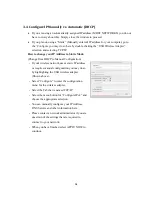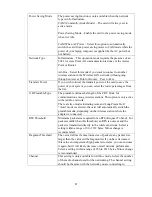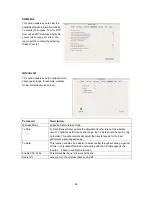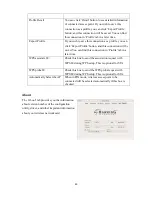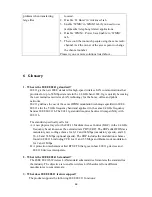
68
scrambling. On the software side, WLAN series offer the encryption function (WEP) to
enhance security and Access Control. Users can set it up depending upon their needs.
12.
What is DSSS? What is FHSS? And what are their differences?
Frequency-hopping spread-spectrum (FHSS) uses a narrowband carrier that changes
frequency in a pattern that is known to both transmitter and receiver. Properly
synchronized, the net effect is to maintain a single logical channel. To an unintended
receiver, FHSS appears to be short-duration impulse noise. Direct-sequence
spread-spectrum (DSSS) generates a redundant bit pattern for each bit to be transmitted.
This bit pattern is called a chip (or chipping code). The longer the chip is, the greater
the probability that the original data can be recovered. Even if one or more bits in the
chip are damaged during transmission, statistical techniques embedded in the radio can
recover the original data without-the need for retransmission. To an unintended receiver,
DSSS appears as low power wideband noise and is rejected (ignored) by most
narrowband receivers.
13.
What is Spread Spectrum?
Spread Spectrum technology is a wideband radio frequency technique developed by the
military for use in reliable, secure, mission-critical communication systems. It is
designed to trade off bandwidth efficiency for reliability, integrity, and security. In
other words, more bandwidth is consumed than in the case of narrowband transmission,
but the trade off produces a signal that is, in effect, louder and thus easier to detect,
provided that the receiver knows the parameters of the spread-spectrum signal being
broadcast. If a receiver is not tuned to the right frequency, a spread –spectrum signal
looks like background noise. There are two main alternatives, Direct Sequence Spread
Spectrum (DSSS) and Frequency Hopping Spread Spectrum (FHSS).
14.
What is WMM?
Wi-Fi Multimedia (WMM), a group of features for wireless networks that improve the
user experience for audio, video and voice applications. WMM is based on a subset of
the IEEE 802.11e WLAN QoS draft standard. WMM adds prioritized capabilities to
Wi-Fi networks and optimizes their performance when multiple concurring
applications, each with different latency and throughput requirements, compete for
network resources. By using WMM, end-user satisfaction is maintained in a wider
variety of environments and traffic conditions. WMM makes it possible for home
network users and enterprise network managers to decide which data streams are most
important and assign them a higher traffic priority.
15.
What is WMM Power Save?
WMM Power Save is a set of features for Wi-Fi networks that increase the efficiency
and flexibility of data transmission in order to conserve power. WMM Power Save has
been optimized for mobile devices running latency-sensitive applications such as voice,
audio, or video, but can benefit any Wi-Fi device. WMM Power Save uses mechanisms
included in the IEEE 802.11e standard and is an enhancement of IEEE 802.11 Legacy
Power Save. With WMM Power Save, the same amount of data can be transmitted in a
shorter time while allowing the Wi-Fi device to remain longer in a low-power “dozing”
state.

